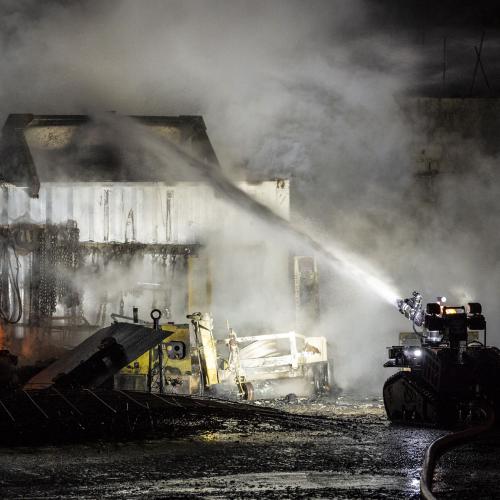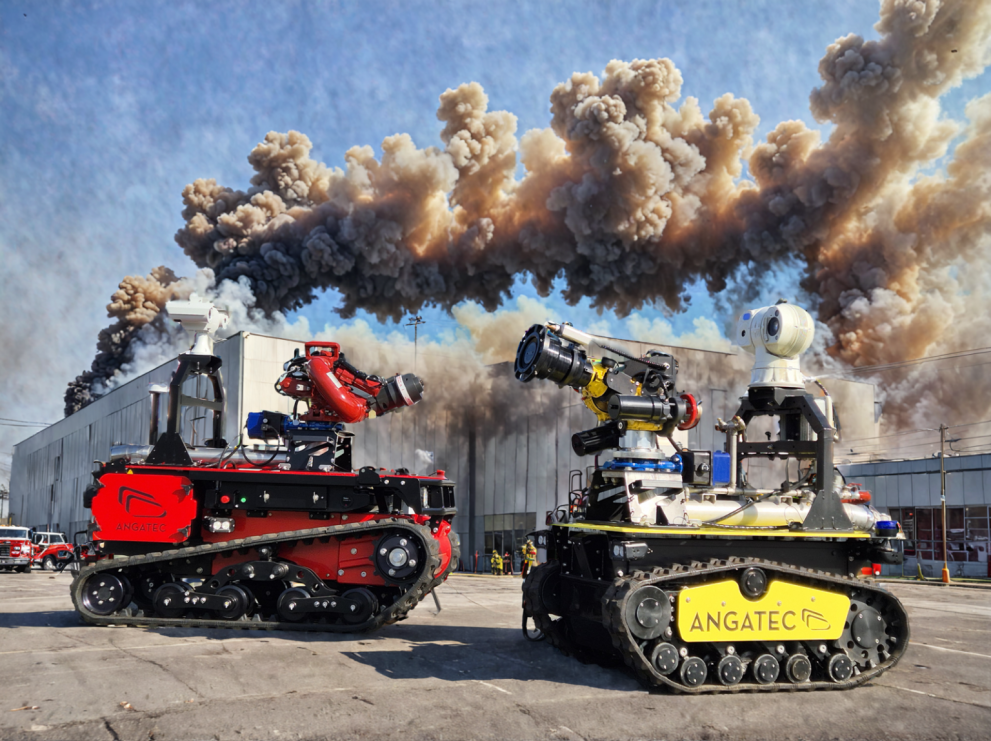
CARMA: Human–robot symbiosis in disaster response
The focus on human–robot collaboration is central to the CARMA project, which looks at how Robotics and AI can support teamwork between people and robots in dynamic and high-stress environments.

CARMA is a Horizon project that explores how AI and robotics can work in symbiosis with humans to improve disaster response. Its core ambition is to co-create, through a user-centred and iterative approach, a modular and intuitive platform of semi-autonomous and autonomous unmanned ground vehicles (UGVs) designed to support first responders and assist citizens in a range of hazardous scenarios — including those involving low visibility, complex terrain, or contaminated environments.
CARMA’s robotic units are conceived as smart, adaptable UGVs equipped with a suite of sensors — including LiDAR, 3D radar, optical and thermal cameras, and acoustic modules. These allow the robots to map, analyse, and navigate their surroundings even in conditions of total obscurity, such as dense smoke or dust. Their design is centred on symbiotic operations, enabling robots and human teams to work in close coordination. “Robots, while not a complete substitute for human expertise and compassion, offer a partial solution by taking on the most dangerous tasks, thereby reducing risk to human life” explains Alexandre Ahmad,Senior Security Expert & R&D scientific coordinator, CS Group

A key feature of CARMA is its empathic interaction capability. “It is important to highlight one of the core features of CARMA’s robotic agents: their ability to interact with humans in a more empathic and emotionally aware manner. CARMA’s robots can assess a person’s affective state—either through voice or image analysis—and adapt their dialogue accordingly” explains Nicholas Vretos, a senior scientist from Centre for Research and Technology (CERTH).
Coordination between robots and human teams is supported by CARMA’s symbiotic orchestration system, which integrates AI-driven mission planning, real-time awareness, and natural user interfaces. Responders can interact through extended reality headsets, haptic gloves (which allow users to feel interactions with virtual objects as if they were real), or voice commands, maintaining hands-free control even in complex environments. The system functions in autonomous or semi-autonomous modes and keeps communication stable through secure mesh networks.
Our approach builds on continuous dialogue with end users. First responders provide essential insights on how humans and robots can collaborate effectively, and we translate that knowledge directly into functional, field-ready solutions.
While CARMA is still in its early phase of pilot testing, the consortium has already achieved successful first system integrations and has drawn extensively on lessons from its predecessor project, INTREPIDopens in new tab, which conducted several real-world exercises with first responders across Europe. These experiences have informed CARMA’s emphasis onuser-centred design, modularity, and the need for robust AI navigation in complex, low-visibility environments.
Despite these advances, CARMA also faces technical and operational challenges. Integrating multiple sensors and AI modules can create issues of reliability, interoperability, and maintenance in harsh environments. AI algorithms for navigation or victim detection can be affected by limited or noisy data, with the risk of false positives or missed detections.

Looking ahead, the project envisions a future where robots are trusted partners that complement human strengths rather than replace them. Through this approach, CARMA contributes to shaping a new paradigm of human–robot teamwork one where technology amplifies human capability while keeping people firmly at the centre of decision-making.
All AI components are developed with a strong emphasis on trustworthiness, explainability, and human oversight, ensuring that autonomous robots enhance, rather than replace, humans in disaster response.

The Knowledge Network editorial team is here to share the news and stories of the Knowledge Network community. We'd love to hear your news, events and personal stories about your life in civil protection and disaster risk management. If you've got a story to share, please contact us.